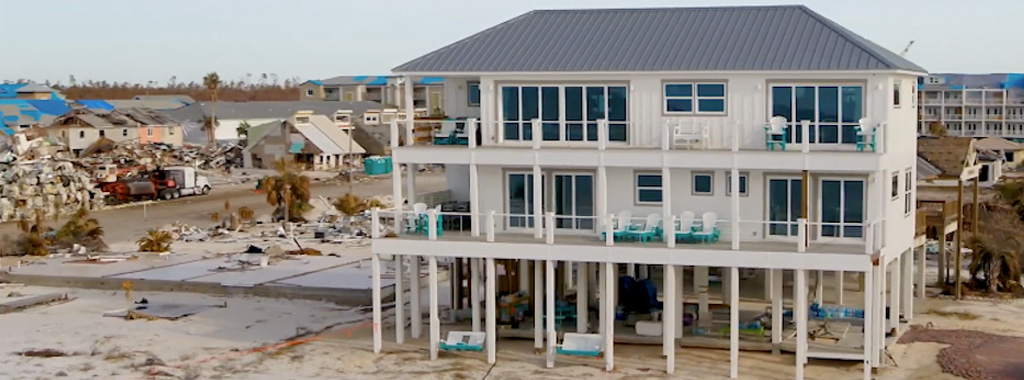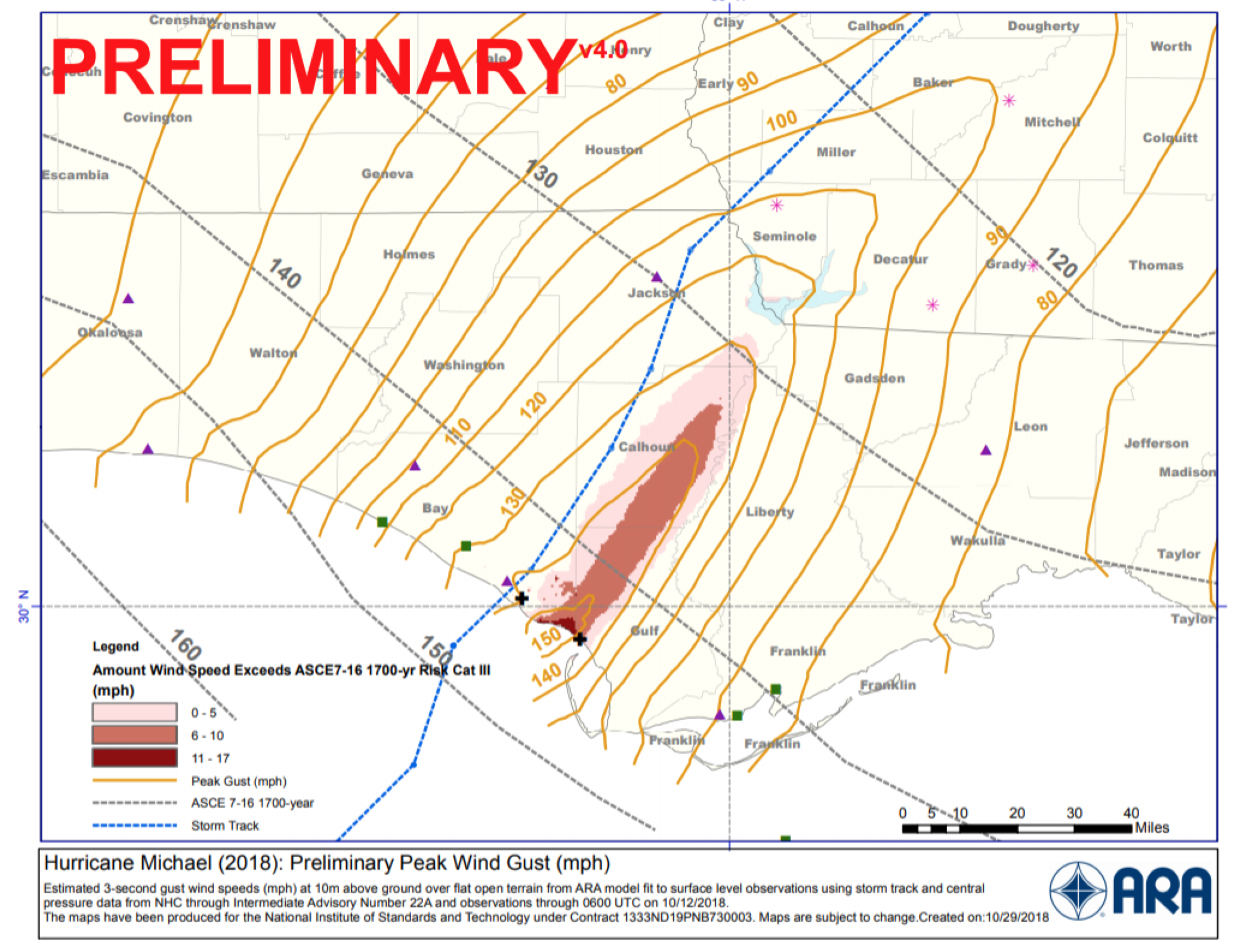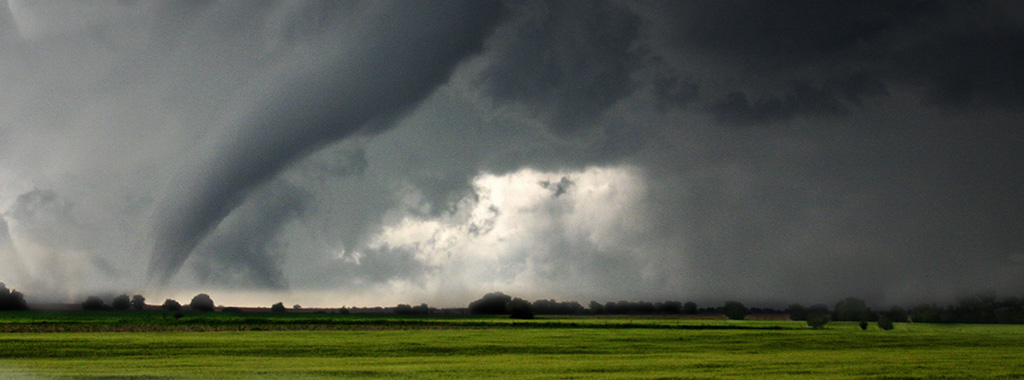In this post, Doug Allen, P.E., a structural engineer with Simpson Strong-Tie, looks at the choice homeowners in disaster-prone areas face between simply building to code and building to standards of resilience or IBHS FORTIFIED Home™ standards instead.
Resilience, or resiliency: The capacity to recover quickly from difficulties; toughness. The ability of a substance or object to spring back into shape; elasticity.
In the wake of the most recent and very devastating hurricane seasons, the theme of structural resiliency has resurfaced with renewed urgency for increasing numbers of homeowners, builders, Designers and civic planners. Hurricanes pose a triple threat of high winds, substantial rain and storm surge. Extreme weather has cost the nation nearly $100 billion in damage during 2018. Accordingly, awareness has risen within affected and surrounding coastal regions regarding their communities’ existing structural resilience ratings (low or high) and the need to improve in view of the losses as well as the time and cost to rebuild what was destroyed.
In the days after Hurricane Michael made landfall, helicopters, drones and survey teams began to document the new historic event, tally the score of man versus nature and quantify the overall destruction as a first step to recovery. Mother Nature very decisively differentiated between structures built to withstand her forces with little to no damage and those that were not built for resiliency. News reporters gravitated toward the stark contrast between the structures still standing and the surrounding devastation. One such example is the much-publicized Sand Palace on Mexico Beach. This juxtaposition raised many questions: What made this structure so resilient? What were the differences between this structure and the others? How much did those differences cost? Were they differences in design, in construction or both? Was this added measure of resilience known prior to the storm? And so forth.
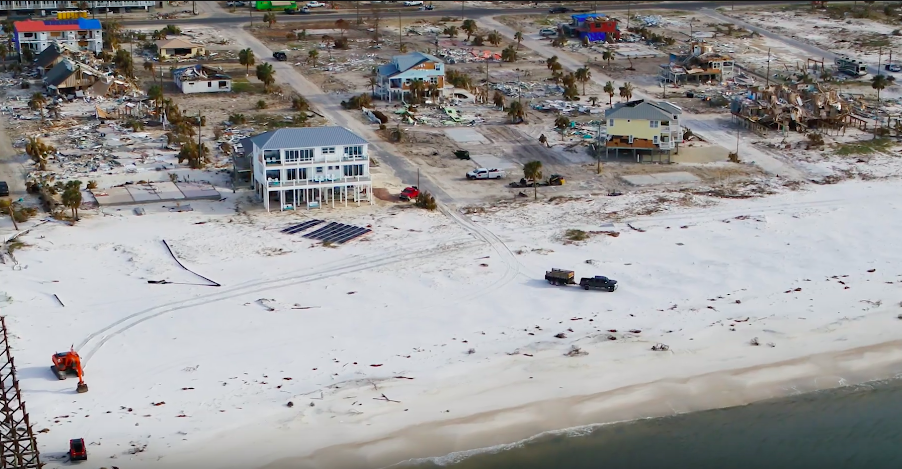
The National Science Foundation (NSF) recently awarded a two-year grant to the Structural Extreme Events Reconnaissance (StEER) Network, a group focused on research of structural performance in extreme events. They deployed prior to Hurricane Michael making landfall and were very instrumental in the damage assessment process. StEER was strategic in setting up towers to measure the storm’s wind speed along its forecasted trajectory, and they used color-coded maps identifying the different demographic of houses by their year of construction and their implied vulnerability. It quickly became obvious that many of the structures were in older communities and were built in the 1960s and 1970s. While some might initially consider a decades-old structure located on the coast to have proven its resiliency simply by its existence, this particular area had not previously been exposed to a high-wind event in recorded history and therefore the existing structures had not necessarily been exposed to events of this significance. Consistent with the havoc caused by Hurricane Harvey in 2017, many older structures exposed to high wind were significantly, if not totally, damaged or destroyed.
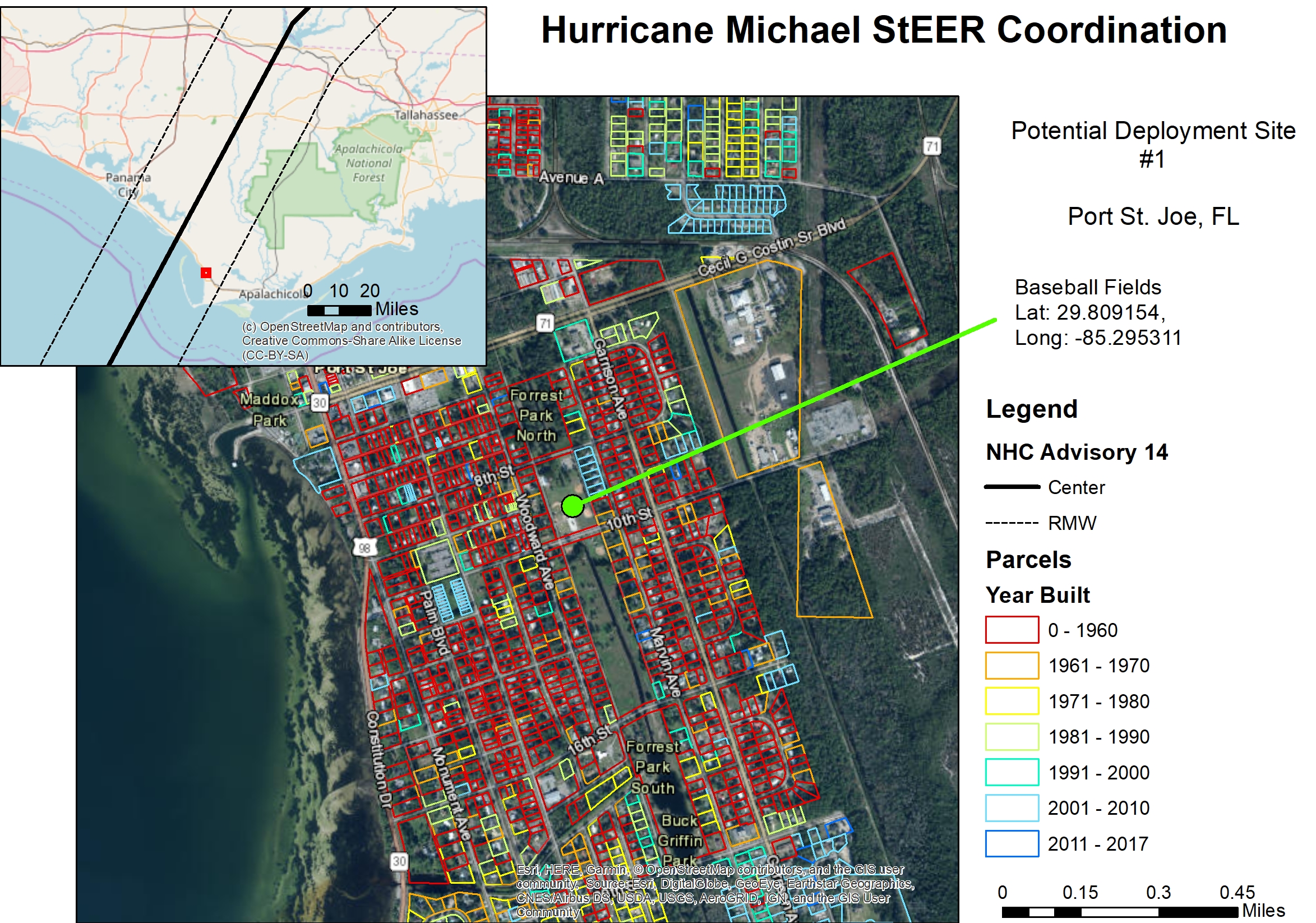
StEER and members of the academic community aided the structural assessment process by cleverly overlaying design wind speed maps with the measured wind speed maps from Hurricane Michael. This added effort provided value to the engineering community and insurance companies. I expect there will be more use of the data collected in this regard, better utilization of developing technologies, and improvement on our previous experiences in the preparation for and evaluation of storms to come.
Considering the devastation wrought upon families that lost their homes or business, I wonder how such a catastrophe would affect me. So often when we are buying homes, realtors speak to the aspects of the house that are associated with value, aesthetic features such as granite countertops or hardwood flooring or features that reduce the building’s energy use or environmental impact. Sometimes there is value placed on siding, soffit, fascia, decks or fences being “low maintenance” because of their material or finish. Expected life is often approximated for the water heater, furnace, AC unit or shingles, but rarely is the structural soundness or toughness seriously discussed as an area of value. This is likely because of the buyer’s implicit trust that the structure has been built to the latest building codes and that the codes will suffice to ensure the occupants’ safety in the event of a natural disaster. However, building codes are intended merely to provide life safety in the event of a design-level natural disaster; this does not imply that the structure and its furnishings will survive the disaster in usable condition. Additionally, older buildings designed and built to superseded codes are typically less resilient because they haven’t benefited from later code provisions developed in response to the lessons of more recent catastrophes or the latest research.
Just as we’ve instituted a 5-star crash rating system for vehicles, many people think it’s time for estimated performance metrics or ratings for what is usually the largest investment of our lives. As we build the communities of our future generations, city planners and engineers are trying to find the perfect balance – the “sweet spot” if you will – between cost and resiliency. Too often, though, the focus is on the short-term versus the life cycle of the building. At one end of the spectrum allowed by law is following just the “minimum design loads” of ASCE 7 or the prescriptive code of the IRC. But for those who want more resilience, who desire to be the one standing beyond design level after a storm, other options, ranked according to measurable strength or resiliency, should be made available to the consumer.
One example of this added measure of resiliency is provided by the IBHS through their FORTIFIED Home™ program, which has additional requirements and inspections to qualify a home for the ascending levels of Bronze, Silver and Gold. These three levels are progressively more robust as they increase resiliency compared to the prescriptive code of the IRC. Would you pay an additional $5,000 to level up the resiliency of one of your biggest investments? What if, due to the increased resiliency, you also received reduced insurance premiums to help offset the additional costs? Habitat for Humanity often builds their structures to the FORTIFIED Home standards. A small cluster of Habitat homes that were located in the path of Michael performed very well, proving that the effort and minimal added cost make the difference.

As an exercise, consider what your current residence would score on the resiliency scale of 1-10. Would your residence also be resilient to other natural disasters such as flood, fire, tornado or earthquake? What substantiates the score you gave your residence? Is retrofitting a possibility? If you were buying an existing home, what are some indicators that your residence was designed and built to a high standard?

As in the Sand Palace, a trip up to the attic to identify hurricane clips holding the roof down to the walls can be comforting. You can also inspect the roof framing quality, and sometimes floor framing of unfinished basements or crawl spaces, but otherwise it is very difficult to know, for instance, whether there’s an adequate lateral system designed and implemented in the structure. It’s nearly impossible to know whether there’s a continuous load path throughout the structure for gravity, uplift and lateral loads. With no established metric of resilience, as consumers we are at the mercy of our implicit trust and charitable assumptions.
Where can you access the marketplace if you want to build a resilient structure? A structural engineer could design to a higher risk category or tighten the allowable deflections, decrease the demand over capacity ratio, etc. Following the prescriptive code, there are options like the FORTIFIED program mentioned above. Reliable builders often take extra measures to add to the resiliency of their structures, too. Special care must be taken in disaster-torn areas, as less qualified or less scrupulous builders try to exploit the rebuilding opportunity.
As we rebuild our communities and recognize the value of resiliency, we can make choices that can have lasting effects. In the coming years, I expect to start hearing from real estate agents about the genetic makeup, the skeleton, the structure of the homes and businesses they are selling. I expect the marketplace to start allowing more room for resiliency decisions, along with metrics that quantify resiliency, to the consumer of new construction or retrofit options. As an engineering profession, we have the responsibility and opportunity to continue to evolve our standards, educate our fellow citizens and strengthen the built environment — our beloved communities of homes, schools and workplaces and their infrastructure.

